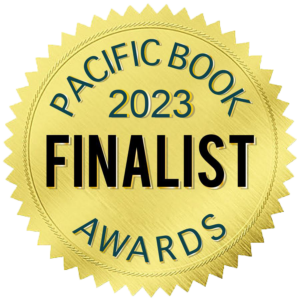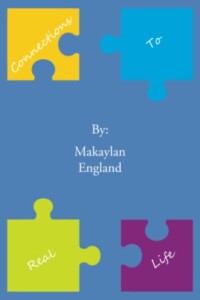Title: Connections to Real Life
Author: Makaylan England
Publisher: XlibrisUS
ISBN: 987-1-6698-0715-5
Pages: 56
Genre: Poetry
Reviewed by: Carol Davala
Pacific Book Review
 Makaylan England’s compact book of verse is a compilation of thoughts, feelings, and
Makaylan England’s compact book of verse is a compilation of thoughts, feelings, and
events surrounding the life of a teen.
Divided into five chapters, each includes a selection of poetic narratives incorporating
various styles. Here the subject matter is connected to topic headings including life,
people, love, and encouragement. While the majority of the work favors a free-form
commentary format, a few poems are given to alternating lines of rhyme. In the midst of
the romance section, England includes a traditional 5-7-5 syllable style haiku entry, as
well as a lesser known tanka, a 31 syllable Japanese poem divided into 5 lines with a 5-
7-5-7-7 pattern. The gamut is perhaps indicative of a younger individual’s desire to
explore a broad range of poetic possibilities.
Here England writes about a variety of themes, most with a heavier vibe flamed by peer
pressure, teen angst, and life stressors. In the opening poem entitled “Life” numerous
questions are raised such as “Why are my thoughts everywhere?” and “Why is my
mother not a part of my life?” The ultimate resolve suggests such occurrences are just
part of what we face in the world. Other entries tackle hidden emotions, like suicidal
contemplations at a time when apologies come too late. The topic of rape is also
introduced in several poems, and here again England goes into a questioning mode
asking “Why me?”, “Why now?”, eventually realizing the cruelties of some life
experiences. Her autobiographic “Picture in My Head” offers a hopeful visual of a future
world, colorful and stress free.
Individuals are incorporated as subject matter in England’s poetry, seemingly those who
have had either positive or negative effects on her life. In “School Teacher” and “A True
Best Friend”, the focus is on caring and concern, and the virtue of “Someone who is
there, ….” In contrast “A Fake” suggests a person that couldn’t be trusted or taken at
their word. Instead, they lied, made excuses, and drew attention for their own
preservation.
As might be expected with a teen author, the lion’s share of poetic expression is
showcased in the romance chapter. England considers a wide range of love sentiments,
from unrequited feelings, hoping to be with someone forever, trust issues, and the idea
that “Love and hate are the same thing.” Verses of the directive “Without Something”
continue to highlight the necessity of opposing forces like happiness and sadness,
sunshine and rain, and possible and impossible in order to recognize their importance
and value. “Love, It’s a 4 Letter Word”, embodies the essence that this simple
monosyllabic rendering is truly a complex emotion that’s hard to decipher. “… easy to
say, …even easier to hear …” but as England’s work recognizes, ever elusive.
Words of encouragement are revealed in the handful of entries from the book’s final
chapter. In “High School”, England reveals it’s a time for change and growth, while
“Above and Beyond” highlights the commonality of fears and our need to conquer them.
“Hello and Then Goodbye” marks doors closing and windows opening in our lives,
amidst lasting memories and new opportunities.
England’s writing reveals a more positive outlook through the book’s progression.
Clearly packed with feeling and emotion, both personal and relatable to readers,
“Connections to Real Life” should find audience appeal among those searching for
youthful life perspectives.


